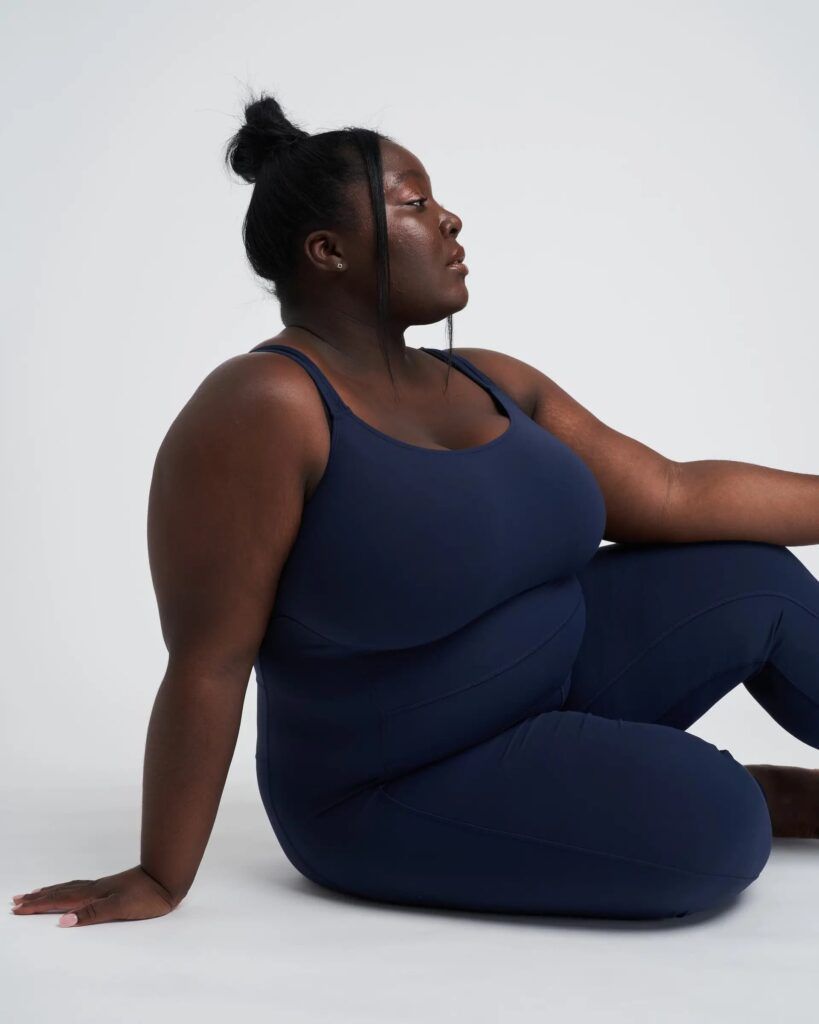[ad_1]
Even if you’ve never heard of the term crooked wash, you’ve probably come across it in fashion advertisements or while searching for plus-size clothing. The pleated wash is a deceptive commercial practice involving the use of plus size models in advertisements or campaigns where the brand or designer does not actually carry plus size.
This also applies where brands use body-inclusive language to drive traffic to their brands, but only carry a limited plus-size range.
Ok, but… give me some examples of Curve-Washing
Probably the best-known example of curve wash is luxury brand Moschino. Moschino has many bespoke garments for: lizzo for red carpet events. Of course, Lizzo looks absolutely gorgeous in these designs.
However, if you go to Moschino’s website, you’ll find out that they only offer items up to size 14. Size charts list size 16, but there are no products available in this size. This sends the message to plus-size consumers that they are worth dressing up only if they are already a famous icon.
luxury brandThey are not the only criminals. Many smaller brands use similar tactics. For example, Cider has just updated its sizing to include the size 4X/US 24. everyone,””, but only offered up to US size 20, which they considered 4X at the time.
Another great example is H&M’s “body collection”. This collection claims “It’s all about embracing everyone and celebrating your wonderful curves.” However, looking at this collection, it is only offered up to size 22 or XXL. This is an interesting choice of limiting sizes because H&M offers up to a US 30/4X in plus size range.
On the other hand, we want to take the time to appreciate brands that feature plus-size models in their ads and campaigns, have an inclusive size chart, and are doing great things for the community.
Universal Standard It has one of the most comprehensive size charts in the 00-40 size range. Their sizes are unique because they are Medium size 18/20. It makes sense to set the average height of a US woman as “medium”. Dimensions then go up and down from this setpoint.

TikToker McKenna (@fatgirlfab) made a short series about brands guilty of curve washing in 2022. This included brands like Billabong and Roxy, which for a long time were considered flat-size-only brands. These brands use large size models in their advertisements, only offer products up to size 14 or 16 and claim to have them. “models for all sizes.”
McKenna says, “How can brands get away with saying things like ‘one size fits all’ when they aren’t? Going up to an XXL size, not including the size which does not cover all body types. In fact, it doesn’t even cover most body types… and this marketing is wrong and exploitative.”
Why Is Curve-Wash Harmful?
The crooked wash is detrimental to the plus-size ensemble for a number of reasons. First, it gives the illusion that more plus size clothing is available than is actually there. About 20% Although ~70% of US women are at least a size 16, the bulk of the apparel market is for plus size women (Christel et al. 2017).
Secondly, there are a lot of flat sized people who specifically look for brands that cover sizes to shop. The pleated wash can give them a false sense of security that they are buying from a brand that wants to include all sizes.
Finally, including size is a hot topic right now. Drives more traffic to websites due to inclusive language, only for plus size women who are disappointed when their size isn’t an option.
So why do brands do this?
So why do brands use this kind of PR strategy? It creates a positive media image of the brand to appear body inclusive without revealing the effort and money to enter the plus-size space.
It is seen as very performant for plus size people who are familiar with curve washing. If brands don’t want to deal with changing their brand culture, searching for appropriate body sizes and marketing to plus size people, We shouldn’t use our bodies as a clickbait.
[ad_2]
Source link
